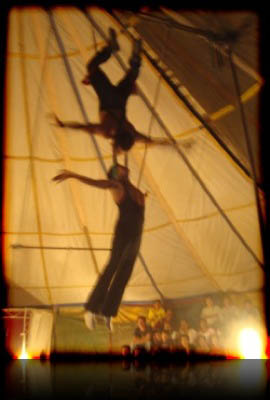Play: A Framework for Design, Development, and Gamification
DOI:
https://doi.org/10.25071/1913-5874/37384Abstract
This article presents a model of play to distinguish the ethos of activities as part of a continuum between play, games, work, and threat. The key to determining the ethos of an activity is the discourse of the activity, and how an activity is communicated as a message (process & content of communication), the mood of the communication (how it should be interpreted), and consequence (what is at stake). These three discourse categories can be binaries, and presented as a spectrum based upon: coherence and ambiguity. The proposed model suggests that play can be measured across three axes presented as binaries based upon the degree of coherence and ambiguity. This model frames a method for distinguishing and designing for play in any medium.
References
Bekoff, Marc. “Play Signals as Punctuation: The Structure of Social Play in Canids.” Behaviour 132.5-6 (1995): 5–6. Print.
Bekoff, Marc. “The Development of Social Interaction, Play, and Metacommunication in Mammals: An Ethological Perspective.” Quarterly Review of Biology (1972): 412–434. Print.
Bekoff, Marc, and John A. Byers. Animal Play: Evolutionary, Comparative and Ecological Perspectives. Cambridge University Press, 1998. Google Scholar. Web. 10 Mar. 2013.
Brown, Stuart. “Play as an Organizing Principle: Clinical Evidence and Personal Observations.” Animal play: Evolutionary, comparative, and ecological perspectives (1998): 242–251. Print.
Cowley, Ben et al. “Toward an Understanding of Flow in Video Games.” Computers in Entertainment (CIE) 6.2 (2008): 20. Print.
Csikszentmihalyi, Isabella Selega. Optimal Experience: Psychological Studies of Flow in Consciousness. Cambridge University Press, 1992. Google Scholar. Web. 9 Apr. 2014.
Csikszentmihalyi, Mihaly. “Flow and the Psychology of Discovery and Invention.” HarperPerennial, New York (1997): n. pag. Google Scholar. Web. 16 Apr. 2014.
Deterding, Sebastian, Dan Dixon, et al. “From Game Design Elements to Gamefulness: Defining Gamification.” Proceedings of the 15th International Academic MindTrek Conference: Envisioning Future Media Environments. ACM, 2011. 9–15. Google Scholar. Web. 6 Apr. 2014.
Deterding, Sebastian, Miguel Sicart, et al. “Gamification. Using Game-Design Elements in Non-Gaming Contexts.” PART 2———–Proceedings of the 2011 Annual Conference Extended Abstracts on Human Factors in Computing Systems. N. p., 2011. 2425–2428. Google Scholar. Web. 15 Nov. 2013.
Dickinson, ANTHONY, and BERNARD Balleine. “Hedonics: The Cognitive-Motivational Interface.” Pleasures of the brain (2010): 74–84. Print.
Doolittle, PETER E. “The Need to Leverage Theory in the Development of Guidelines for Using Technology in Social Studies Teacher Preparation: A Reply to Crocco and Mason et Al.” Contemporary Issues in Technology and Teacher Education 1.4 (2001): 501–516. Print.
Dubbels, B. “Dance Dance Education and Rites of Passage.” International Journal of Gaming and Computer-Mediated Simulations (IJGCMS) 1.4 (2009): 63–89. Print.
Dubbels, B. “Designing Learning Activities for Sustained Engagement: Four Social Learning Theories Coded and Folded into Principals for Instructional Design through Phenomenological Interview and Discourse Analysis.” n.p. Print.
Dubbels, B. “Video Games, Reading, and Transmedial Comprehension.” Handbook of Research on Effective Electronic Gaming in Education. n.p., 2008. 251–276. Print.
Dubbels, Brock. “Gamification, Serious Games, Ludic Simulation, and Other Contentious Categories:” International Journal of Gaming and Computer-Mediated Simulations 5.2 (2013): 1–19. CrossRef. Web. 13 Aug. 2013.
Elliot, Andrew J. “Approach and Avoidance Motivation and Achievement Goals.” Educational psychologist 34.3 (1999): 169–189. Print.
Elliot, Andrew J. “The Hierarchical Model of Approach-Avoidance Motivation.” Motivation and Emotion 30.2 (2006): 111–116. Print.
Elliot, Andrew J., and Martin V. Covington. “Approach and Avoidance Motivation.” Educational Psychology Review 13.2 (2001): 73–92. Print.
Elliot, Andrew J., Shelly L. Gable, and Rachael R. Mapes. “Approach and Avoidance Motivation in the Social Domain.” Personality and Social Psychology Bulletin 32.3 (2006): 378–391. Print.
Engeström, Yrjo, Reijo Miettinen, and Raija-Leena Punamäki, eds. Perspectives on Activity Theory. Cambridge University Press, 1999. Print.
Froebel, Friedrich. “THE EDUCATION OF MAN IN CHILDHOOD.” Early Years Education: Major Themes in Education 1 (2006): 66. Print.
Gable, Shelly L. “Approach and Avoidance Social Motives and Goals.” Journal of personality 74.1 (2006): 175–222. Print.
Gibson, James Jerome. The Ecological Approach to Visual Perception. Psychology Press, 1986. Print.
Gould, Stephen Jay, and Richard C. Lewontin. “The Spandrels of San Marco and the Panglossian Paradigm: A Critique of the Adaptationist Programme.” Proceedings of the Royal Society of London. Series B. Biological Sciences 205.1161 (1979): 581–598. Print.
Graesser, Arthur C., Danielle S. McNamara, and Max M. Louwerse. “What Do Readers Need to Learn in Order to Process Coherence Relations in Narrative and Expository Text.” Rethinking reading comprehension (2003): 82–98. Print.
Krulwich, Robert. “Polar Bear Flip-Flop: People Hated, Then Loved These Photos. What Changed?” NPR.org. n.p., n.d. Web. 24 Apr. 2014.
McNamara, Danielle S. et al. “Are Good Texts Always Better? Interactions of Text Coherence, Background Knowledge, and Levels of Understanding in Learning from Text.” Cognition and instruction 14.1 (1996): 1–43. Print.
Meckley, Alice. Play according to Garvey. 2008. Personal Correspondence.
Mumford, Lewis. Technics and Human Development: The Myth of the Machine, Vol. I. Harvest Books, 1971. Google Scholar. Web. 2 Mar. 2013.
Nacke, Lennart, and Craig A. Lindley. “Flow and Immersion in First-Person Shooters: Measuring the Player’s Gameplay Experience.” Proceedings of the 2008 Conference on Future Play: Research, Play, Share. ACM, 2008. 81–88. Google Scholar. Web. 16 Apr. 2014.
Norman, Donald A. Emotional Design: Why We Love (or Hate) Everyday Things. Basic books, 2007. Google Scholar. Web. 16 Apr. 2014.
Norman, Donald A. “Introduction to This Special Section on Beauty, Goodness, and Usability.” Human-Computer Interaction 19.4 (2004): 311–318. Print.
Norman, Donald A. The Psychology of Everyday Things. Basic books, 1988. Google Scholar. Web. 16 Apr. 2014.
Prawat, Richard S., and Robert E. Floden. “Philosophical Perspectives on Constructivist Views of Learning.” Educational Psychologist 29.1 (1994): 37–48. Print.
Rosing, Norbert. The World of the Polar Bear. Christopher Helm Publishers, Incorporated, 2006. Print.
Sackett, Aaron M. et al. “You’re Having Fun When Time Flies the Hedonic Consequences of Subjective Time Progression.” Psychological Science 21.1 (2010): 111–117. Print.
Sutton-Smith, B. The Ambiguity of Play. Harvard Univ Pr, 2001. Google Scholar. Web. 13 July 2012.
Tennie, Claudio, Josep Call, and Michael Tomasello. “Push or Pull: Imitation vs. Emulation in Great Apes and Human Children.” Ethology 112.12 (2006): 1159–1169. Print.
Tomasello, Michael. The Cultural Origins of Human Cognition. Harvard University Press, 1999. Google Scholar. Web. 2 Mar. 2013.
Trabasso, Tom, and Linda L. Sperry. “Causal Relatedness and Importance of Story Events.” Journal of Memory and Language 24.5 (1985): 595–611. Print.
Van den Broek, Paul et al. “A ‘landscape’ View of Reading: Fluctuating Patterns of Activation and the Construction of a Stable Memory Representation.” Models of understanding text (1996): 165–187. Print.
Van den Broek, Paul et al. “The Causal Inference Maker: Towards a Process Model of Inference Generation in Text Comprehension.” Comprehension processes in reading (1990): 423–445. Print.
Van Gennep, Arno. The Rites of Passage. Vol. 44. Routledge, 2004. Google Scholar. Web. 2 Mar. 2013.
Von Marenholtz-Bulow, B. How Kindergarten Came to America: Friedrich Froebel’s Radical Vision of Early Childhood Education. New Press, The, 2007. Print.
Webster, Jane, Linda Klebe Trevino, and Lisa Ryan. “The Dimensionality and Correlates of Flow in Human-Computer Interactions.” Computers in human behavior 9.4 (1994): 411–426. Print.
White, Robert W. “Motivation Reconsidered: The Concept of Competence.” Psychological review 66.5 (1959): 297. Print.
Wood, David. How Children Think and Learn. B. Blackwell, 1988. Google Scholar. Web. 20 May 2013.
Wood, David, Jerome S. Bruner, and Gail Ross. “The Role of Tutoring in Problem Solving*.” Journal of child psychology and psychiatry 17.2 (1976): 89–100. Print.





